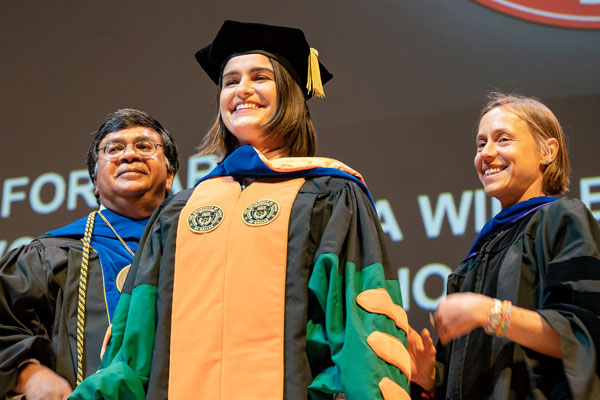
Contact the Web Team at jsomweb@utdallas.edu
Web design, app development and customer relations
The JSOM DSA Team provides exceptional user experience through user-friendly web design and accessible content that builds public understanding and support for the university.
The DSA team makes strategic design choices for your web pages based on JSOM Web Standards.

Benefits of JSOM Web Standards
JSOM Web Services has created this standards guide in an effort to balance the design and brand integrity on the one hand and stakeholder flexibility on the other.
Features
- Expanded dynamic content – we can now publish pieces of content one time then use that piece throughout the site and only need to update one instance for all changes to synchronize
- Flexible top navigation – this is relative to where the user is on the site and allows users to navigate to different sections without returning to the top navigation bar
- Static footer navigation – used for consistency purposes to provide key information like contact details and a way to easily get back to the homepage
- On-brand for UT Dallas and JSOM – the university has streamlined its color palette, and we are using those plus a range of neutral colors to stay consistent across our sites
- Business-oriented design – the use of white and subtle colors for legibility purposes
- Content and design consistency – to make it easier over the entire site to navigate and be user-friendly
- Responsive design – available on all mobile and tablet devices
- Current technology and coding standards used to develop (HTML5, CSS3 and jQuery)
- Updated design standards and features to be followed by all programs
- JSOM Web Services works with content owners to monitor expired pages and make sure content is correct and up-to-date

Structure a Page
Learn about the visual and structural building blocks that create clear, user-friendly and SEO-optimized web pages.
The Building Blocks of a JSOM Web Page
Well-organized written content is the fundamental element of good web design. When content owners provide JSOM Web Services with quality content that is written to inspire visitors and drive them to action, the design process flows naturally from the content provided.
Learn how to use headings, blocks, colgrids, accordions and tables to organize a web page so nicely that your visitors will want to come back.
Learn more about page structure
Format Text
Learn about the visual and structural building blocks of creating a page that is clear, user-friendly and SEO-optimized.
Making Content Easy to Understand
While video, images and graphics are effective supporting elements, text is the heart and soul of a web page. And JSOM Web Services has researched and tested the most effective ways to present the words on your pages. Text should be concise and not duplicated, as pages without distinct information can hinder search engine rankings.
Learn more about how and why we work with headings, paragraphs, readability, styling text, lists, dates and times to ensure that your page is a pleasure to read.
Get the details about formatting text
Link to Content
Each web page is an essential piece of a greater whole. Effectively linking pages together creates a journey for visitors so they can discover who we are and what they want to know about us.
Creating the Journey
Hyperlinks support the message of a page, offer examples or documentation, provide options to learn more information and drive visitors to take important actions. The tools and rules are pretty simple.
Get the details about how and when to use text hyperlinks, buttons and image links to help visitors get everything they need while on our website.
Start linking to content now
Use Images and Graphics
Imagery is the spoonful of sugar that helps visitors digest all of the written content on a page.
Showing in Order to Tell
Photos of people doing meaningful things can draw visitors into the spirit of a web page, and graphics can make content more skimmable so visitors can quickly find what is relevant to them. Images on a web page always serve the page’s purpose emotionally or conceptually.
Read the introduction to images and then dig into the specifics of portrait images, hero images, images and text together on a page, images with colgrid, images in posts, infographics and stat boxes and charts.
Get the picture
Create and Embed Posts
Posts allow people – students, alumni, faculty and staff – to speak directly to our visitors in their own voices.
Letting People Tell Their Stories
While we do our best to inform and inspire visitors on our web pages, sometimes it’s best to get out of the way and let people speak for themselves about their JSOM experiences. People who are excited to share their successes and personal growth as a result of their time in the JSOM community can be the most persuasive aspect of a web page’s message.
When someone has a proud testimonial or exciting student experience, these can become posts, and we can use posts throughout the website in dynamic ways. The topic of posts is extensive and deep – as it suits our broad and diverse JSOM community – and this section of our web standards has a lot of information about Student Testimonials, Alumni Spotlights, Student Ambassadors, Student Experiences, Resource Articles and Podcasts.
Let their voices be heard